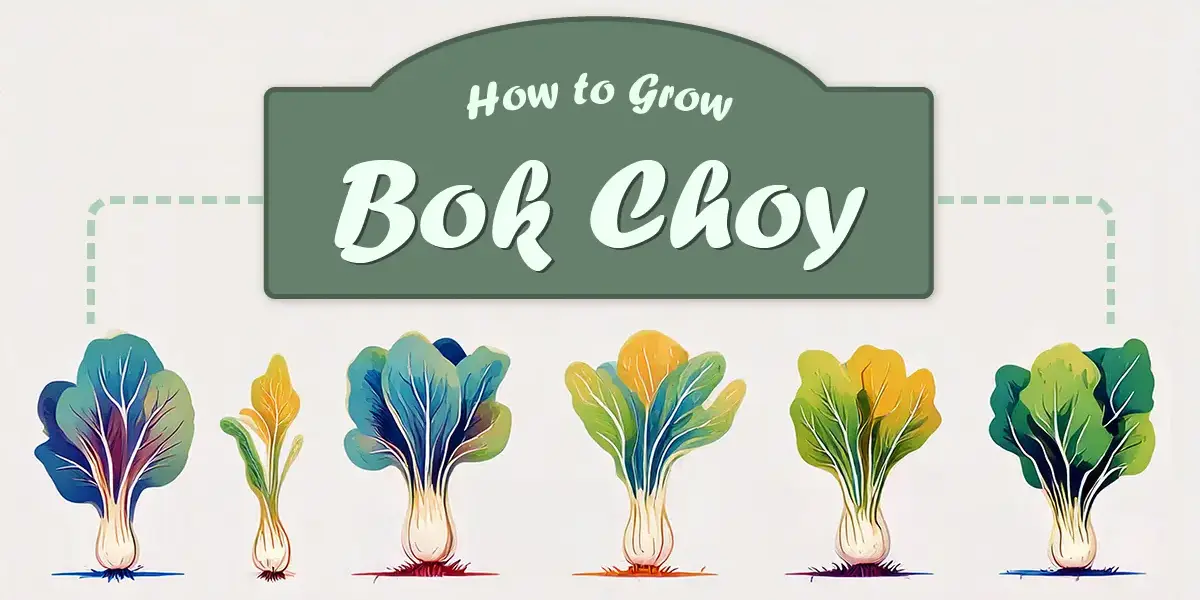Bok choy, or Chinese cabbage, has been cultivated in China for over 1,500 years. In Cantonese, the name “bok choy” means “white vegetable,” referring to its pale, crunchy stems. Over time, this nutritious vegetable spread globally and became an essential ingredient in many Asian and fusion dishes due to its mildly sweet flavor and crisp texture.
Bok Choy Benefits
Why grow bok choy? ‘Cuz it tastes good and is packed with nutrients!
- It’s high in vitamins K, C, and A.
- It’s low in calories and perfect for weight management.
- It’s high in fiber. Anyone for gut health?
- It’s chock-full of antioxidants and phytonutrients that combat inflammation and support well-being.
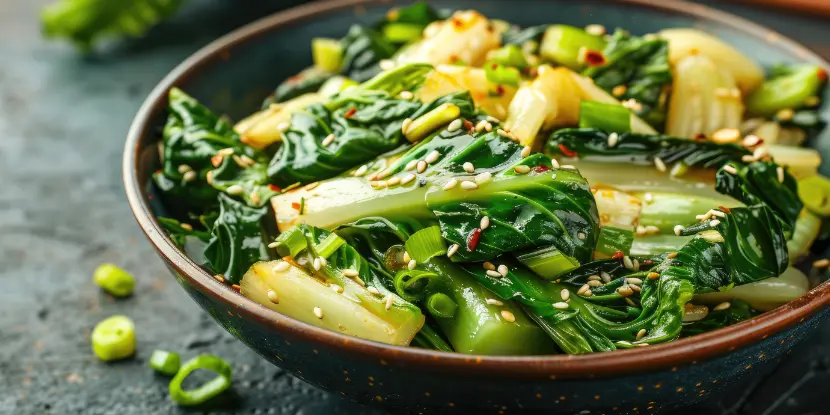
Stir fries without bok choy? Unthinkable!
Ideal Growing Conditions
Light
- Needs full sun for robust growth but tolerates partial shade.
- Aim for 4–6 hours of sunlight daily.
Temperature
- Prefers cool weather between 50–75°F.
- Great for spring and fall gardens as it doesn’t tolerate extreme heat.
Soil
- Thrives in well-draining, nutrient-rich soil.
- Prefers a soil pH of 6.0–7.5.
- Enrich soil with compost or organic matter for best results.
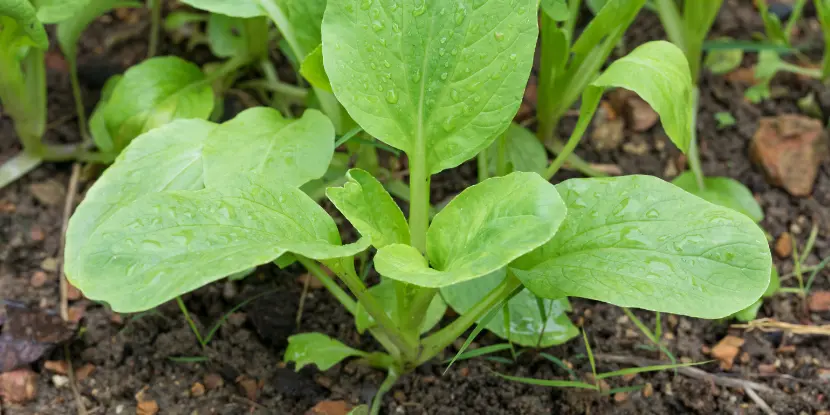
A young bok choy plant in the garden.
Propagating Bok Choy
From Seeds
- Start seeds indoors 4–6 weeks before the last frost.
- Sow seeds 1/2 inch deep and 1 inch apart in rows spaced 18 inches apart.
- After germination, thin seedlings to a spacing of 6–10 inches.
From Transplants
- Transplant seedlings outdoors two weeks after the last frost.
- If using store-bought transplants, gently loosen roots before planting.
From Cuttings
- Cut off the bottom 1–2 inches of a bok choy head.
- Place the stalk in a container with an inch of water.
- In about a week, roots will appear, and you can transplant into soil.
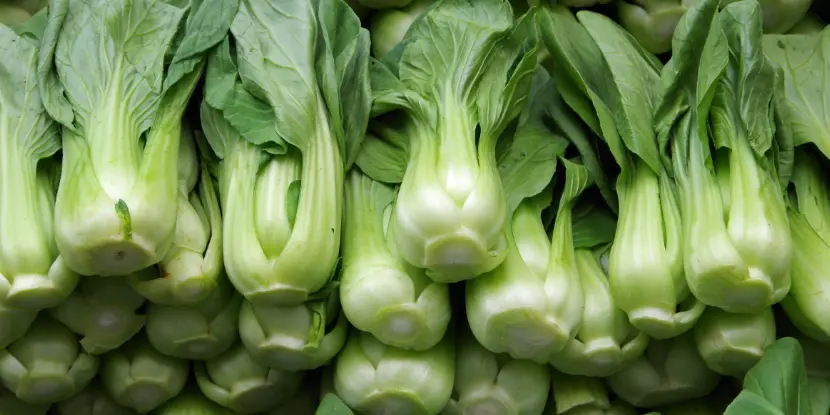
To propagate bok choy, cut off the bottom of a head and place it in water.
Steps for Planting
- Bok choy takes approximately 45–60 days to mature.
- For spring planting, sow seeds 2–3 weeks before the last frost. For fall, plant in late summer.
- Loosen the soil and remove weeds.
- Follow spacing guidelines based on the method of propagation.
- Sow seeds in rows spaced 18 inches apart.
- Cover with 1/2 inch of soil and water gently.
- Keep soil moist but not waterlogged, using drip irrigation if possible.
- Thin seedlings to a spacing of at least 6 inches for larger varieties and closer for smaller ones.
Transplanting
- Dig holes slightly deeper than the root ball and twice as wide.
- Set plants at their original depth, firm soil around them, and water well.
- Space transplants according to recommended guidelines.
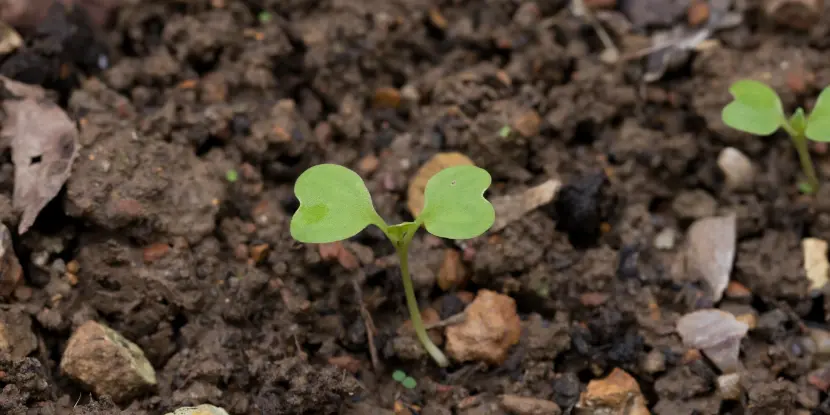
Mighty bok choy stalks from little seedlings grow.
Care & Maintenance
Water
- Bok choy needs consistent moisture. Water 1–1.5 inches each week.
- Avoid waterlogging the soil to prevent rot.
- Mulch plants to retain moisture and prevent weeds.
Fertilizer
- Bok choy is a heavy feeder. Add compost or organic fertilizer at planting time.
- Apply a liquid fertilizer every two weeks during the growing season.
Pests & Diseases
- Watch out for aphids, caterpillars, and slugs. Remove them manually or use organic sprays.
- Prevent diseases like powdery mildew with proper spacing and airflow.
Companion Planting
- Plant bok choy with herbs like basil, dill, and mint to repel pests.
- Avoid planting near other brassicas like broccoli, cauliflower, or kale.
- Great companions include beets, carrots, cucumbers, and onions.
Harvesting Bok Choy
- Harvest after 45–60 days or when plants are at least 6 inches tall.
- Cut the outer leaves as needed for stir-fries or salads.
- For entire heads of bok choy, harvest when mature by cutting off at ground level.
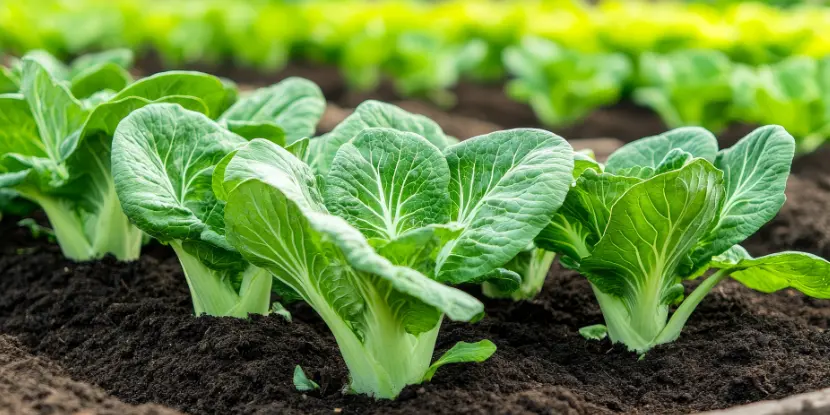
Bok choy plants ready for harvest.
Cooking with Bok Choy
Time to eat, friends! Here are some tips for preparing and cooking bok choy:
- Wash thoroughly and pat dry before using.
- Separate the stems from the leaves and chop them into bite-sized pieces.
- Heat a wok or pan with oil on high heat.
- Add garlic, ginger, and any other desired seasonings.
- Stir in bok choy stems for a few minutes, then add the leaves until wilted.
- Enjoy your fresh bok choy stir-fried as a side dish, or add protein for a complete meal!
FAQs: Growing Bok Choy
Q: Can I grow bok choy indoors?
Yes, it grows well indoors with adequate sunlight or artificial grow lights.
Q: Does bok choy bolt easily?
Hot temperatures and inconsistent watering can trigger bolting. Keep the environment cool and maintain regular watering.
Q: What pests are most common with bok choy?
Aphids, cabbage moths, and slugs are typical pests. Organic sprays and companion planting can help manage them.
Q: Can I regrow bok choy after harvesting?
You can place the base of harvested bok choy in water to encourage regrowth.
Q: Why is my bok choy wilting?
Wilting can be caused by under-watering, heat stress, or pests. Address these issues promptly for recovery.
Q: How much sunlight does bok choy need?
Bok choy thrives in full sun but can tolerate partial shade. Aim for 4–6 hours of direct sunlight daily for optimal growth.
Q: Can bok choy tolerate frost?
Bok choy is a cool-weather crop and can tolerate light frost. However, prolonged freezing temperatures can damage the plant.
Q: How do I prevent my bok choy from bolting?
Grow bok choy in cool weather and avoid exposure to extreme heat or sudden temperature fluctuations. Consistent watering and proper planting schedules also help.

